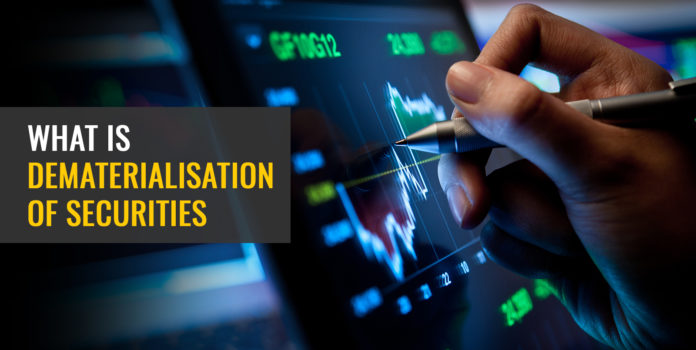We all know that there was a time when the Indian stock market use to follow a trading method where there was physical trading of securities. They were stored in the form of physical certificates which resulted in a large amount of paperwork for both the traders and investors. But at the same time, this increased the workload and risk of dealing with physical copies. Seeing this Securities and Exchange Board of India (SEBI) introduced dematerialisation and rematerialisation.
This helped in improving transparency and efficiency in the whole trading process. This has also helped in the easy holding of securities, transfer of shares, buying and selling etc. Know that converting securities in electronic form is called dematerialisation, whereas conversion of shares in electronic format to paper forms by issuing share certificates in lieu of online holding is called rematerialisation. But keeping the shares in physical format comes with multiple hassles like loss, misplacing, fire, fake certificates etc. Sometimes an investor wishes to close his or her Demat account, so rematerialisation is done. In case some have 2-3 company shares and want to hold them, instead of paying annually for a Demat account, he/she will prefer to hold it physically, which is rematerialisation.
The following points highlight the difference between dematerialisation and rematerialisation:
- Meaning- Converting physical certificate of shares or other securities in electronic form is called dematerialisation whereas converting securities that are in digital format into physical certificates are called rematerialisation.
- The convenience of the process- Dematerialisation is meant to be easy and convenient as one does not have to think about storing the physical documents. They can look for them online at their comfortable time and place and make changes as well without much formality. Whereas rematerialisation is quite difficult and cumbersome. It is tough to store physically as they are prone to risks like theft, fire etc.
- Ease of trading- Know that with dematerialisation, you can easily look into the details of your holdings. It will be smooth, straight and transparent. In rematerialisation, you have to look into the transactions physically as per the locations.
- Maintenance- Dematerialisation requires minimal maintenance charges whereas rematerialisation does not require any. Though the brokers or financial institutes make sure to store your security safely.
- Security- There is zero risk when it comes to the dematerialisation of securities but in rematerialisation, there is a huge risk involved. So one has to be very particular when it comes to keeping the physical certificates safe.
- Authority of account- In the dematerialisation of securities, the securities will rest with the depository participant i.e. NSDL or CDSL. These are instituted by SEBI, so they are safe and reliable. Whereas in the rematerialisation of securities, the authority of account will lie with the company.
So above are some of the points highlighting the difference between dematerialisation and rematerialisation. Another question that arises is can I have multiple Demat accounts. The answer to that is yes, you can have two or more Demat accounts and it is considered advantageous, especially for serious traders. So if you wish you open a demat account and trade online, you should visit ‘Sharekhan.’


